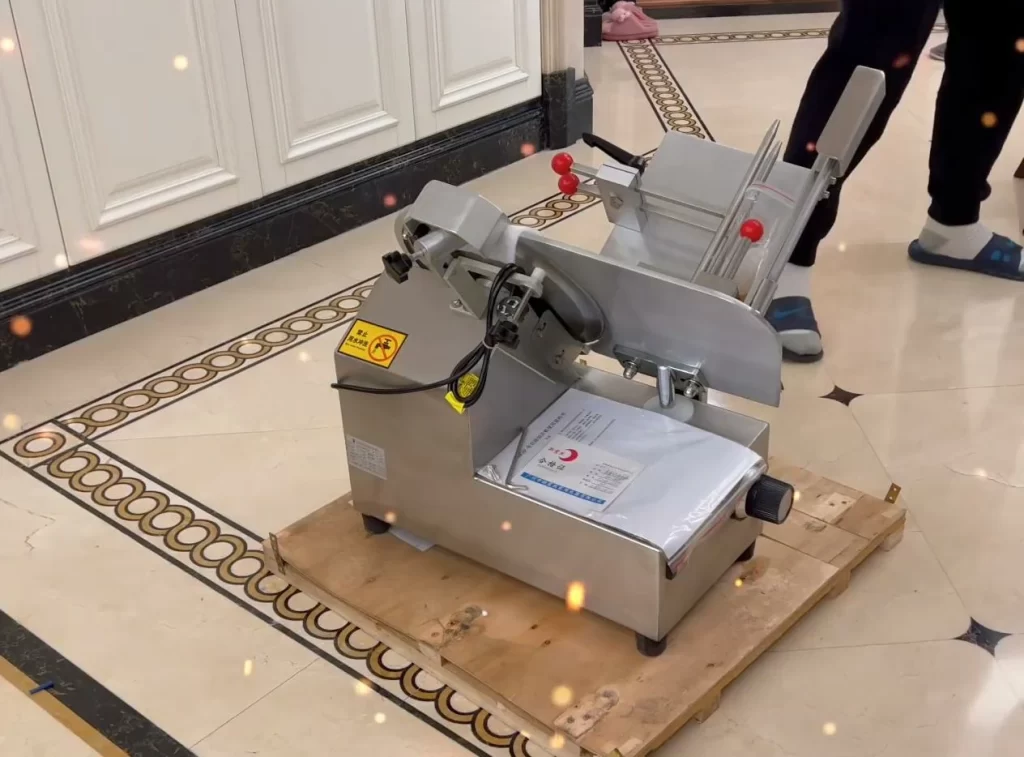Introduction:
In the culinary world, the art of meat cutting is as much a science as it is a skill. The right slicer for meat can elevate the quality of your dishes and streamline your kitchen operations. Whether you’re a professional chef, a restaurant owner, or a home cook, selecting the perfect meat slicer is crucial for achieving the desired cuts and maintaining the integrity of your ingredients. This ultimate guide will provide you with the knowledge and tools to choose the right slicer for meat, ensuring precision, efficiency, and satisfaction in your culinary endeavors.

- Understanding the Types of Meat Slicers
There are various types of meat slicers available in the market, each designed for specific cutting needs. Manual slicers are great for home use, while electric and commercial-grade slicers are essential for high-volume establishments. Band saws and chopper-grinders are specialized for large-scale processing. - Identifying Your Cutting Requirements
Assess the types of meat you’ll be slicing and the thickness of the cuts required. Different slicers are better suited for different meats and cut thicknesses. For example, deli-style slicers are perfect for thin slices of ham or turkey, while a more robust slicer may be needed for whole roasts. - Evaluating Slicer Size and Capacity
Consider the physical space available in your kitchen and the size of the meat you’ll be slicing. A larger slicer may offer a larger cutting area but will also take up more space. - Motor Power and Efficiency
For electric slicers, the motor’s power is a key factor. A powerful motor can handle tougher cuts and larger pieces of meat with ease. Additionally, energy efficiency should be considered, especially for commercial use. - Blade Quality and Material
The blade is the heart of any slicer for meat. Look for high-quality stainless steel blades that are sharp, durable, and easy to replace. The blade’s design should allow for even and precise cuts. - Safety Features
Safety is paramount when dealing with sharp blades and moving parts. Ensure the slicer you choose has safety features such as a guard to cover the blade when not in use and an emergency stop function. - Ease of Use and Ergonomics
A good slicer should be easy to operate and comfortable to use for extended periods. Look for features such as adjustable slicing thickness, easy-to-clean components, and a design that reduces strain on the user. - Maintenance and Durability
Regular maintenance is essential for the longevity of your slicer. Choose a model that is easy to disassemble, clean, and maintain. Durability is also key; a well-built slicer will withstand the test of time and heavy use. - Warranty and Customer Support
The warranty offered by the manufacturer can be an indicator of the quality and reliability of the slicer. Additionally, responsive customer support can be invaluable when you need assistance or replacement parts. - Budget Considerations
Determine your budget and find a slicer that offers the best value for your money. Keep in mind that investing in a high-quality slicer can save you money in the long run by reducing the need for repairs and replacements. - Reading Reviews and Recommendations
Look for reviews from other users, especially those who have similar needs to yours. Personal recommendations from industry professionals can also provide valuable insights. - Testing the Slicer
If possible, test the slicer before purchasing. This will give you a feel for its performance, ease of use, and whether it meets your specific requirements.
Conclusion:
Choosing the right slicer for meat is a critical decision that can significantly impact the quality of your food preparation. By considering the type of slicer, your cutting requirements, motor power, blade quality, safety features, ease of use, maintenance, warranty, budget, and customer reviews, you can make an informed decision. Remember, the perfect slicer for meat is not just a tool; it’s a partner in your culinary journey, ensuring that every cut is precise and every dish is a masterpiece. Invest wisely, and let your slicer for meat be the key to unlocking the full potential of your ingredients.